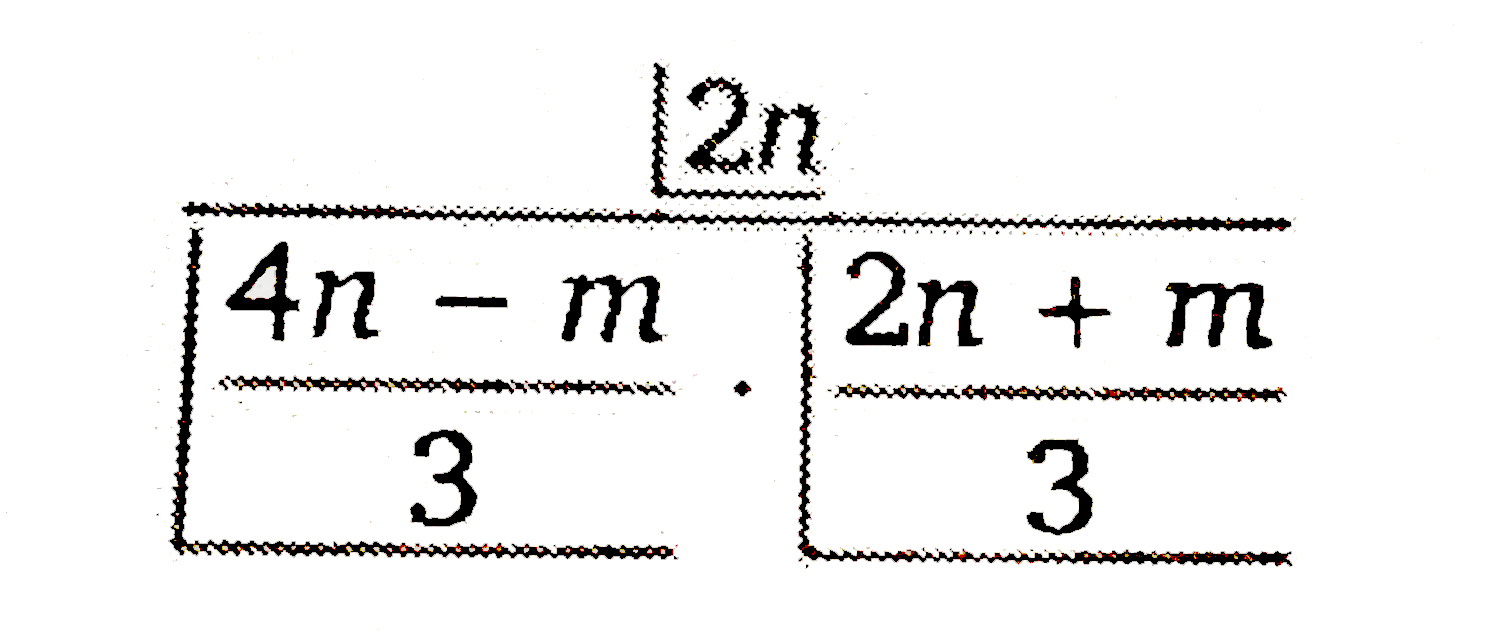If xn occurs in the expansion (x+1/x2)n , then the coefficient of xm is (2n)!(m)!(2n−m)! b. (2n)!3!3!(2n−m)! c. (2n)!(2n−m3)!(4n+m3)! d. none of these
(2n)!m!(2n−m)!
(2n)!3!3!(2n−m)!
(2n)!(2n−m3)!(4n−m3)!
none of these
The correct Answer is:C
Step by step video, text & image solution for If x^n occurs in the expansion (x+1//x^2)^n , then the coefficient of x^m is ((2n)!)/((m)!(2n-m)!) b. ((2n)!3!3!)/((2n-m)!) c. ((2n)!)/(((2n-m)/3)!((4n+m)/3)!) d. none of these by Maths experts to help you in doubts & scoring excellent marks in Class 11 exams.
Updated on:21/07/2023Topper's Solved these Questions
- BINOMIAL THEOREM AND ITS APPLCIATIONS BOOK - OBJECTIVE RD SHARMACHAPTER - BINOMIAL THEOREM AND ITS APPLCIATIONS EXERCISE - Chapter Test
60 Videos
- BINOMIAL THEOREM AND ITS APPLCIATIONS BOOK - OBJECTIVE RD SHARMACHAPTER - BINOMIAL THEOREM AND ITS APPLCIATIONS EXERCISE - Section I - Assertion Reason Type
13 Videos
- CARTESIAN CO-ORDINATE SYSTEM BOOK - OBJECTIVE RD SHARMACHAPTER - CARTESIAN CO-ORDINATE SYSTEM EXERCISE - Exercise
29 Videos
Similar Questions
Knowledge Check
If in the expansion of (1+x)m(1−x)n , the coefficients
of x and x2 are 3 and - 6 respectively, the value of m and n areA6B9C12D24If in the expansion of (1+x)m(1−x)n , the coefficients
of x and x2 are 3 and - 6 respectively, the value of m and n areA6B9C12D24
The coefficient of 1/x in the expansion of (1+x)n(1+1/x)n is n!(n−1)!(n+1)! b. (2n)!(n−1)!(n+1)! c. (2n)!(2n−1)!(2n+1)! d. none of these
View SolutionIf in the expansion of (1+x)m(1−x)n, the coefficients of xandx2 are 3 and -6 respectively, then m is:
View SolutionDifferential coefficient of (xl+mm−n)1/(n−l)⋅(xm+nn−l)1/(l−m)⋅(xn+ll−m)1/(m−n) wrt x is
View SolutionIf 'n' is a positive integer then prove that the coefficient foxm in the expansion of (x2+1x)2n is :

View SolutionIf 'n' is a positive integer then prove that the coefficient foxm in the expansion of (x2+1x)2n is :

View SolutionThe middle term in the expansion of (2x3−32x2)2n is a. 2nCn b. (−1)n 2nCn x−n c. 2nCnx−n d. none of these
View Solution
